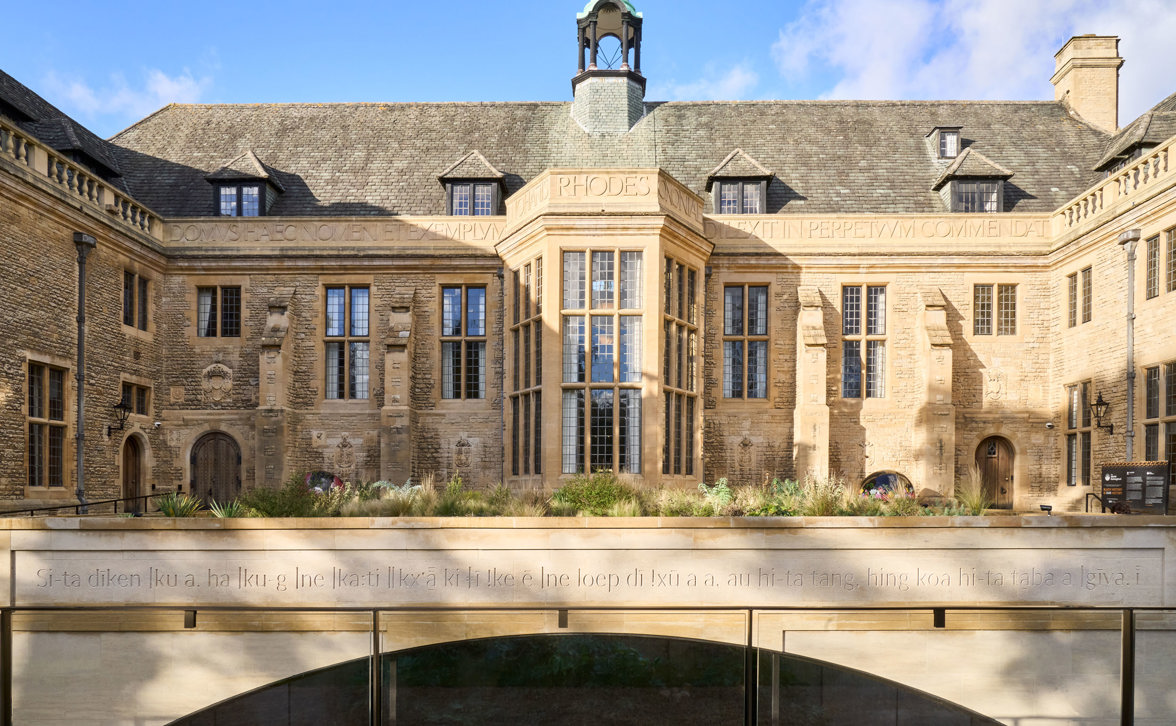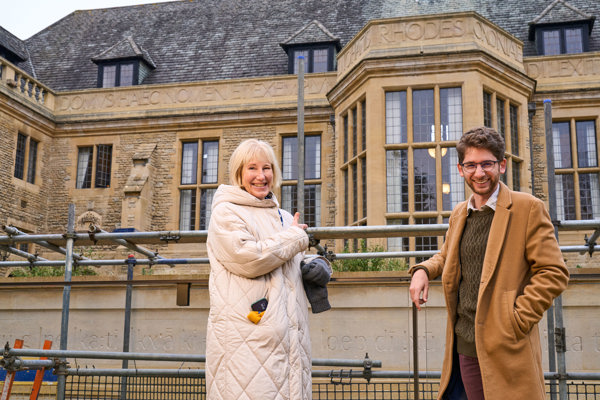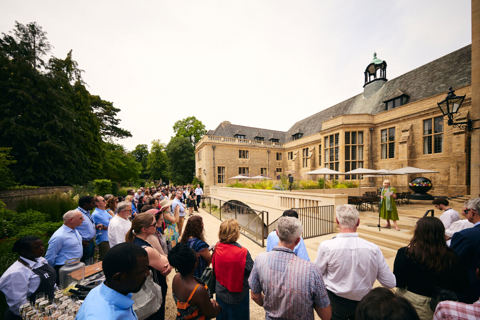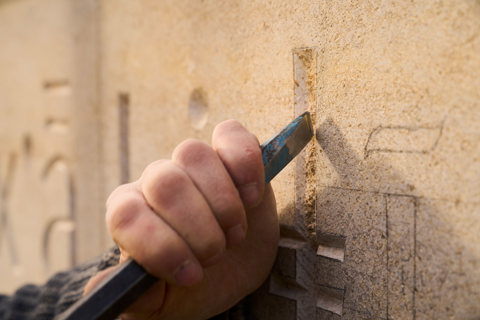Not long after the ‘Big Build’ project began at Rhodes House, our LEI advisory groups saw a clear opportunity for some physical acknowledgement of the history of the Rhodes Trust in Africa, and hence also of the origins of the Rhodes Trust’s wealth. We chose to make this acknowledgement in the form of a new parapet inscription at Rhodes House.
Across many conversations with Rhodes Scholars, Rhodes Trustees and other interested people located worldwide, across time zones and generations, we agreed the wording: ‘Remembering and honouring in our work those who suffered and laboured to generate this wealth’. We also came to agreement that the language of the inscription should not be English. Though English is the global language, it is also a colonial language, and one through which many cultures and languages worldwide have felt excluded.
The language we chose was ǀxam, which is tied to the South African region whose history was profoundly shaped by Cecil Rhodes and where he lived and died. Khoekhoegowab and other languages of northern South Africa, southern Namibia and Botswana, still spoken today, share complicated histories with ǀxam. The language lives on in the work of several leading South African authors and is found in the motto on the South African coat-of-arms, which translates as ‘diverse people unite’.
But how were we to translate our chosen wording into ǀxam? Step forward DPhil student Luan Staphorst, who had taught himself ǀxam for research purposes, and who generously agreed to lead the translation work in close consultation with South African linguists Menán du Plessis and Kerry Jones. Luan and I were able to travel to the Northern Cape in 2024 to meet with community elders and experts in Nǀuu (Nǀhuki) – a language related to ǀxam – Ouma Katrina Esau and her granddaughter Claudia du Plessis. They were broadly encouraging of the project and helped us to fine-tune aspects of the translation.




